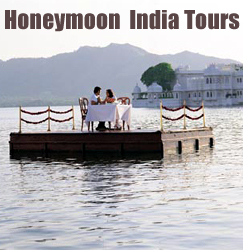|
|
 |
|
|
Home >>
India Tourism Guide >> Delhi Travel GuideDelhi Travel GuideOne of the most fascinating aspects of Delhi is the "visibility" of its historic past. Were it not for the demands of urbanization, large portions of the city could well be earmarked as archaeological parks. This is because the rulers of successive dynasties between the 13th and the 17th centuries established seven cities in different parts of Delhi. A chronological review of these cities fortunately also serves as a suitable itinerary for tourists and highlights the important monuments amongst the 1300 officially listed.Delhi's history goes much further back in time than the 13th century. In 1955, excavations at the Purana Qila revealed that the site was inhabited 3000 years ago. Ware pottery known as Painted Gray Ware and dated to 1000 BC confirmed this as being yet another site associated with the epic Mahabharata. The excavations also cut through houses and streets of the Sultanate, Rajput, post-Gupta, Gupta, Saka-Kushan and Sunga periods, reaching down to the Mauryan era (300 BC), thus revealing almost continuous habitaion. The association of Emperor Ashoka (273-36 BC) with Delhi has come to light with the discovery of a Minor Rock Edict in the locality known as Srinivaspuri. A clearer picture of the city emerges from the end of the 10th century, when the Tomar Rajputs established themselves in the in the Aravalli hills south of Delhi. The isolated, rocky outcrop facilitated the defence of the royal resort which the Rajputs called Dhilli or Dhillika. The core of the first of the seven cities was created by Anangpal Tomar who is said to have built Lal Kot, which is the first known regular defence work in Delhi. The Chauhan Rajputs later captured Delhi from the Tomars . Prithviraj III, also known as Rai Pithora, extended Lal Kot, adding massive ramparts and gates, and made Qila Rai Pithora the first city of Delhi. Today, only the ramparts are visible near the Qutub Minar , though the city is known to have had several Hindu and Jain temples. Prithviraj was ruling Delhi when Muhammad of Ghur invaded India, and died fighting the invader at the Second Battle of Tarain in 1192. Ghur returned, but left as his viceroy, his slave Qutbuddin Aibak. In 1206, Qutbuddin crowned himself as the Sultan of the Slave or Mamluk dynasty, and became the first Muslim ruler of Delhi. Qutbuddin, had however, commenced his architectural career even before he chose to become the sultan. The mosque was essential to the Islamic emphasis on congregational prayer, while the burial of the dead, as opposed to cremation, introduced the tomb to India. The earliest of these Islamic structures are to be seen in the Qutub complex and the incorporation of many Hindu elements is due to the ready availability of building material and the use of local craftsmen. Qutbuddin raised the Quwwat-ul-Islam (might of Islam) mosque, which is the earliest extant mosque in India. Within its spacious courtyard he retained the 4th century Iron Pillar, probably the standard of an ancient Vishnu temple. The pillar has puzzled scientists, as its iron has not rusted in all these centuries. In 1199, Qutbuddin raised the Qutub Minar either as a victory tower or as a minaret to the adjacent mosque. From a base of 14.32 mtrs it tapers to 2.75 mtrs at a height of 72.5 mtrs. It is still the highest stone tower in India, one of the finest tower Islamic structures ever raised and Delhi's recognized landmark. It was completed by the Sultan's successor and son-in-low, Iltutmish. The tomb of Iltutmish, which he himself built in 1235, is nearby. Its interiors are profusely decorated with calligraphy, thought the dome has collapsed. The Khalji rulers displaced the Slave dynasty in 1290, and when Alauddin Khali ordered renovations of the mosque in 1311, he also raised the impressive Alai Darwaza, the southern entrance to the mosque. It is the first example of a building employing wholly Islamic principles of construction, including the true arch. In 1303, Alauddin, established the second city of Delhi, called Siri, of which nothing remains but the embattlements. He also had dug a vast reservoir, Hauz Khas, to sypply water to his city. Contemporary historians describe the Delhi of that time as being the "envy of Baghdad, the rival of Cairo and the equal of Constantinople". (for the sake of convenience, tourists visiting the Qutb complex could also see the Tomb of AdhamKhan and Zafar Mahal in Mehrauli, and the Tomb of Jamai-Kamali behind the Qutb Minar. These, however, belong to a later date.) The Khalhjis were replaced by the Tughlaq dynasty in 1321. of its eleven rulers, only the first three were interested in architecture and each of them established a new city. Places to See India Gate Built as a memorial to commemorate the 70,000 India soldiers killed in World War I, India Gate was designed by Sir Edwin Lutyens and completed in 1931. Rashtrapati Bhawan Formely the Viceregal Lodge, the building is the highlight of Lutyen's New Delhi and was completed in 1929 at a cost of 12,53,000 pound sterling. Located in an area of 130 hectares, the palace has 340 rooms. Red Fort So called because of the red stone with which it is built, the Red Fort is one of the most magnificent palaces in the world. India's history is also closely linked with this fort. It was frorth here ht the British deposed the last Mughal ruler, Bhadur Shah Zafar, marking the end of the three century long Mughal rule. It was also fromits ramparts that the first prime. Minister of India, pandit Jawharlal Nehru, announced to the nation that India was free form colonial rule. Qutub Minar The origins of Qutab Minar are shrouded in controversy. Some believe it was erected as a tower of victory to signify the beginning of the Muslim rule in India. Others say it served as a minaret to the muezzins to call the faithful to prayer. No one can, however, dispute that the tower is not only one of the finest monuments in India, but also in the world. Purana Quila The fort is said to be constructed on the historic site of indraprastha (900BC) by Humayun and Sher Shah. Covering a circuit of about a mile, the walls of the fort have three gates and are surrounded by a mat fed by the river Yamuna. Jantar Mantar At first sight, the Jantar Mantar appears like a gallery of modern art. It is, however, an observatory. Sawai Jia Singh II of Jaipur (1699-1743), a keen astronomer and a noble in the Mughal court, was dissatisfied by the errors of brass and metal astronomical instruments.
|
| Rajasthan Tour Packages | Ladakh Tour Packages | Kerala Tour Packages | South India Tours | Wildlife Tour Packages |
| Colourful
Rajasthan Tour Rajasthan Desert Tour Golden Triangle Tour Royal Raja Tour Rajasthan Forts & Palaces Tour |
Ladakh
Cultural Tour Ladakh Festival Tour Ladakh Monastery Trek Manali Ladakh Trek Indus Valley Trek |
Kaleidoscopic
Kerala Kerala Backwaters Tour Kerala Beach Tour Best of Kerala Tour Kerala Holiday Package |
Best
of South India South India Temples Tamil Nadu Tour Packages Karnataka Tour Packages South India Extensive |
Rajasthan
Wildlife Tour South India Wildlife Tour Luxury India Wildlife Tour India Wildlife Tour Tiger Safari Tour |
| Cultural Tours India | Adventure Tours India | Buddhist India Tour Packages | Taj Mahal Tours | North India Tours |
| Cultural
Tour of Rajasthan Kerala Cultural Tour North India Cultural Tour Andhra Pradesh Cultural Tour Karnataka Cultural Tour |
Trekking
Tour in India River Rafting in India Skiing in India Adventure Cycle Tour Sikkim & Bhutan Adventure |
Ajanta
Ellora Tours Andhra Pradesh Tour Bodhgaya Tours Buddhist Trails Buddhist Sites in India & Nepal |
Same
Day Taj Mahal Taj Mahal With Tiger Taj Mahal With Rajasthan Taj Mahal with North India Taj Mahal & Erotic Temples |
Best
of North India Buddhist Pilgrimage North India & Nepal Glimpses of Ladakh North India Highlights |
| Golden Triangle Tours | Beaches in India | North East India Tour Packages | Bhutan Tour Packages | Nepal Tour Packages |
| Golden
Triangle Tour Golden Triangle Tour with Khajuraho Golden Triangle Tour with Pushkar Golden Triangle Tour with Rishikesh Golden Triangle Tour with Srinagar |
Goa
Beaches Kerala Beaches Lakshadweep Beaches Beaches of Daman & Diu Orissa Beaches |
Arunachal
Cultural Tour Assam Tea Heritage Nagaland Cultural Tour Sikkim Cultural Tour West Bengal Offbeat Kalimpong |
Bhutan
Holiday Package Bhutan Trekking Tour Bhutan Valley Tour Bhutan Cultural Tour Bhutan Monastery Tour |
Kathmandu
Valley Rafting and Wildlife Chitwan and Pokhara Exotic Nepal Tour |
| Home - About Us - Contact Us - Email - Reservation | ||
|








